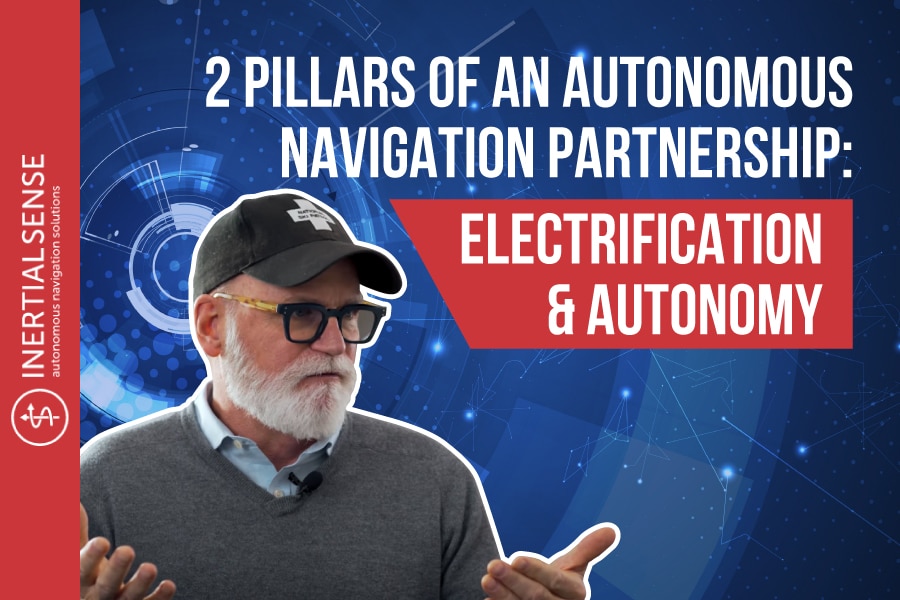
2 Pillars Of An Autonomous Navigation Partnership: Electrification & Autonomy
Have you ever wondered what the driving force behind an autonomous vehicle is and what electrification and autonomy are all about? Watch this video as Tom and Brett discuss the brains of the operation in 2 Pillars Of An Autonomous Navigation Partnership: Electrification and Autonomy blog post.
Technology has helped mankind continue to grow in ways we never thought possible. With the software that Inertial Sense has to offer when it comes to an autonomous navigation partnership, we give your autonomous vehicle the chance to learn as it operates.
Contact Inertial Sense today for your autonomous needs, and find out how we can help drive your autonomous fleet!
Learn More:
What Are The Steps To Implementing Autonomous Navigation Tech?
Where Are Autonomous Robots Used? – The Market for Autonomous Robotics
What It Means To Be a Full-Stack Solution in Autonomous Robotics
Video Transcript
Right and again, I would go back to the two pillars that are going to be driving this, whether it’s commercial groundskeeping, whether it’s repetitive construction tasks, whether it’s security and inspection, it’s going to be electrification and autonomy. That’s going to be the driving pillar for all of these customers, and as long as we’re riding side saddle with them on the part of it that we do well, which is autonomy, we don’t care whether it’s a rope, whether it’s a robotic groundskeeping mower, whether it’s one of the other types of vehicles. Our platform will work with any of those.
So again, when you ask why customers get excited, they think, well gosh, if you guys do our big zero-turn mower well, well we’ve got a vehicle that grades dirt. It has the same type of mission. Can your platform migrate to that type of vehicle? The answer is yes. Nothing that we’re doing is hard-coded into doing a groundskeeping vehicle. So that’s another part that gets them really excited is many of these companies have multiple subsidiaries, multiple product lines. So if you’re telling us that your product works here but will also work on these other vehicles, then there’s a scaling aspect to it that they get really excited about. So we really do become their partner for autonomy.
More long-term looking and long-term, what their, all their other product lines and everything.
Right, and through that process, there is this process of discovery where other things come out that we produce that are of high value to both themselves and to their customers. One of them is we collect a lot of data while we’re running, and the ability to take that data and turn it into something in aggregate that is of value to them into sort of analyzing how their products perform what their customers use it for, what their reliability is, things like that.
We play a big part in the other thing that they’re all trying to figure out is, what role does, I’ll just call it data as a service, what are the data feeds that we can be providing them that layer on top of this autonomy platform that may do something completely different, just like, you know, figure out while the ground’s usually wet, 80 on a day like this so change your speed, or do something like that or a mapping service that automatically downloads the mission because it’s already been done by another robot vehicle, or just something that.
A machine learning algorithm, that’s great for environments where there’s a lot of contour and terrain change. It may download a completely different type of algorithm. That type of thing is dynamically as a service is again what keeps our long-term road back being exciting to these customers.

